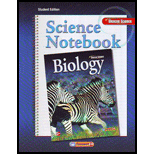
To describe:
The structures and common locations of ferns and horsetails.
Introduction:
Ferns and horsetails are the first of the seedless, vascular land plants. They reproduce with spores and are found in moist environments as they require water at the time of fertilization.
Answer to Problem 5MI
The structures and common locations of ferns and horsetails are given in the table:
- In ferns roots produced from sporophyte.
- Rhizome is stem that stores food.
- Ferns have photosynthetic fronds.
- Spores are formed in sporangium.
- Stems are ribbed, hollow with strobili at tips.
- Leaves and roots are scale-like.
- Found in moist or dry environments.
- Found in damp environments and marshes.
| Ferns | Horsetails | |
| Structure | ||
| Location |
Explanation of Solution
In ferns, stem may be underground as a rhizome with adventitious roots which absorb water and nutrients from the soil. They have compound leaves called fronds. Fronds are photosynthetic organs that also carry reproductive structure. Ferns grow in various environments, they can grow in damp, shady, and moist areas, but can develop and survive also in dry conditions.
In horsetails, the stems are long, ribbed, narrow, and hollow stems with strobilus at tips. The stem is characterized by the presence of joints or nodes. Leaves and branches come out as whorls from the evenly-spaced joints. The needle-shaped leaves do not contribute greatly to photosynthesis, the majority of which takes place in the green stem. Horsetails grow in wet environments and marshes.
Chapter 21 Solutions
Biology Science Notebook
Additional Science Textbook Solutions
Essentials of Genetics (9th Edition) - Standalone book
Campbell Biology: Concepts & Connections (8th Edition)
Genetic Analysis: An Integrated Approach (3rd Edition)
Campbell Biology: Concepts & Connections (9th Edition)
Fundamentals of Anatomy & Physiology (11th Edition)
Campbell Essential Biology (7th Edition)
 Human Anatomy & Physiology (11th Edition)BiologyISBN:9780134580999Author:Elaine N. Marieb, Katja N. HoehnPublisher:PEARSON
Human Anatomy & Physiology (11th Edition)BiologyISBN:9780134580999Author:Elaine N. Marieb, Katja N. HoehnPublisher:PEARSON Biology 2eBiologyISBN:9781947172517Author:Matthew Douglas, Jung Choi, Mary Ann ClarkPublisher:OpenStax
Biology 2eBiologyISBN:9781947172517Author:Matthew Douglas, Jung Choi, Mary Ann ClarkPublisher:OpenStax Anatomy & PhysiologyBiologyISBN:9781259398629Author:McKinley, Michael P., O'loughlin, Valerie Dean, Bidle, Theresa StouterPublisher:Mcgraw Hill Education,
Anatomy & PhysiologyBiologyISBN:9781259398629Author:McKinley, Michael P., O'loughlin, Valerie Dean, Bidle, Theresa StouterPublisher:Mcgraw Hill Education, Molecular Biology of the Cell (Sixth Edition)BiologyISBN:9780815344322Author:Bruce Alberts, Alexander D. Johnson, Julian Lewis, David Morgan, Martin Raff, Keith Roberts, Peter WalterPublisher:W. W. Norton & Company
Molecular Biology of the Cell (Sixth Edition)BiologyISBN:9780815344322Author:Bruce Alberts, Alexander D. Johnson, Julian Lewis, David Morgan, Martin Raff, Keith Roberts, Peter WalterPublisher:W. W. Norton & Company Laboratory Manual For Human Anatomy & PhysiologyBiologyISBN:9781260159363Author:Martin, Terry R., Prentice-craver, CynthiaPublisher:McGraw-Hill Publishing Co.
Laboratory Manual For Human Anatomy & PhysiologyBiologyISBN:9781260159363Author:Martin, Terry R., Prentice-craver, CynthiaPublisher:McGraw-Hill Publishing Co. Inquiry Into Life (16th Edition)BiologyISBN:9781260231700Author:Sylvia S. Mader, Michael WindelspechtPublisher:McGraw Hill Education
Inquiry Into Life (16th Edition)BiologyISBN:9781260231700Author:Sylvia S. Mader, Michael WindelspechtPublisher:McGraw Hill Education





